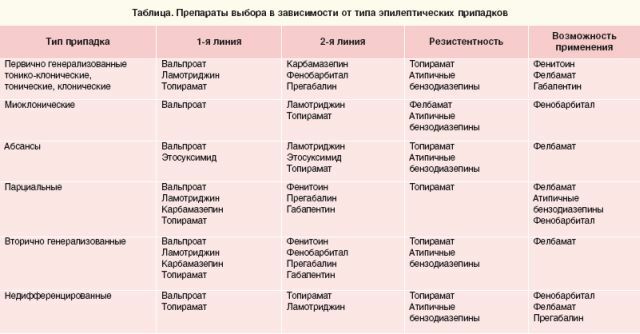 Today in medicine, various methods of diagnosing epilepsy have been developed and are being actively used which allow specialists to accurately answer the question of whether the patient is currently or currently suffering from a neurological pathology.
Today in medicine, various methods of diagnosing epilepsy have been developed and are being actively used which allow specialists to accurately answer the question of whether the patient is currently or currently suffering from a neurological pathology.
Initially, we are talking about instrumental methods of research that enable us to evaluate the electrical activity of the brain, and also to trace the existence of structural transformations such as: tumors, vascular malformations, congenital anomalies, etc.
A history of
At the initial stage of diagnosis,collection of all necessary data( anamnesis).The stage involves clarifying the details and nuances associated with the onset of the disease, the nature of its course, the duration of the disease in the patient.
The collection of information about the appearance of the first seizures, their frequency, loss of consciousness by the patient during an attack, affecting convulsions of all limbs simultaneously or only one part. 
Including for the doctor information about hereditary predisposition( possible transfer of the given illness to relatives or relatives of the patient) is important.
The epileptologist doctor has a long conversation with the patient and his family. Through the collection of information, a specialist is able to predetermine the type of epileptic attack( whether it is focal, complex focal, partial, myoclonic, generalized, etc.), and also give an initial assessment - in which part of the brain can be observed its defeat.
Blood analysis
Blood sampling for analysis is associated with an assessment of biochemical disorders and genetic abnormalities in the patient. It also helps in the differential diagnosis of epilepsy from other causative factors associated with seizures, such as infection, anemia, lead poisoning, diabetes mellitus, and others.
Neurological examination
At the initial stages of the diagnosis of the disease, attention is paid to the neurological examination of the patient. The presence of pain in the head, weakness of one side of the body, variable gait is an indication of an organic brain disease( tumor / multiple sclerosis).
In addition, diagnosis involves testing for memory, attention, speech, speed of thinking, etc. Due to the tests, the doctor is able to assess the effect of epilepsy on the patient in a neurological and psychological sense.
EEG - the key to solving the riddle
Electroencephalography is one of the key ways to recognize epilepsy. It allows to distinguish the characteristic features of the disease( epilepsy) from other ailments that are not accompanied by the formation of a pathological discharge in the cerebral cortex.
 Fixation of the pathological discharge in the cerebral cortex, at the time of epileptic seizure, can be achieved through a special EEG method. Thanks to this analysis, the doctor is able to determine in which areas of the cerebral cortex the discharge starts, how it spreads, and in the end, determine what type of attack.
Fixation of the pathological discharge in the cerebral cortex, at the time of epileptic seizure, can be achieved through a special EEG method. Thanks to this analysis, the doctor is able to determine in which areas of the cerebral cortex the discharge starts, how it spreads, and in the end, determine what type of attack.
The essence of the method is as follows: special electrodes are fixed on the patient's head, which will fix the electrical activity of the brain in the form of brain waves. The fastening of the electrodes is done so that all parts of the brain are covered: the occipital, temporal, frontal, parietal.
The EEG recording is carried out in a special shielded chamber, which protects against the formation of various interference, which can have significant consequences on the result of the diagnosis.
At the time of examination, the patient is lying down( with eyes closed) in a darkened room. The duration of the diagnosis is about 20 minutes.
Single EEG recording, conducted, most often, between the seizures, is not always able to detect pathological abnormalities.
This is due to the fact that the probability of an attack at the time of recording is not so high. In addition, in a number of patients deviations in the record can be detected only at the time of the attack. Therefore, in this situation, EEG recording is used only at the moment of sleep.
In addition, for a thorough diagnosis of epilepsy, use a long video EEG monitoring, which along with accurate diagnosis is able to monitor the results of treatment.
Neuroimaging
In the case of symptomatic forms of epilepsy, which were caused by structural changes in the brain, special significance is exercised in the diagnosis of neuroimaging.
Thanks to it, specialists are able to obtain layered images of the brain, are able to accurately discern the structural changes that the  takes place in the substance of the brain. Speaking about the basic methods of neuroimaging, today we can distinguish between computer( CT) and magnetic resonance imaging( MRI).
takes place in the substance of the brain. Speaking about the basic methods of neuroimaging, today we can distinguish between computer( CT) and magnetic resonance imaging( MRI).
Thanks to this method, specialists are able to visualize the brain and its main structures. An important role in computed tomography is in the focal form of epilepsy, at a time when it is necessary to accurately determine the state of the area of the brain with which the EEG method registered epiaktivity.
Among the main advantages of the method can be identified better detection of calcifications and fresh hemorrhages. Unfortunately, the resolving power of computed tomography is small. As a result, to obtain more accurate information about the structural features of the brain, it is better to use magnetic resonance imaging, which has several advantages, unlike computed tomography: the
- does not have X-ray radiation;
- it is able to more accurately differentiate the brain structure and a number of alterations associated with the developmental defects of the cortex, some tumors and foci of demyelination;
- helps to carry out research in almost any plane( the ability to see the area inaccessible during computer tomography);
- promotes the identification of indirect signs of adhesions, often occurring after a meningitis.
It should be noted that the contraindication to MRI is the presence in the patient of any metal objects in the body that can not be withdrawn before the diagnosis begins( we are talking about metal structures, implants used for joint replacement, chemical brackets, artificial pacemaker, etc..).Diagnosis should not be done in women during pregnancy.
If the patient does not have the opportunity to perform a CT scan or an MRI scan, certain information can be obtained from routine echoencephaloscopy, which can be found in any neurological department.
Experimental diagnostic methods for
 Today, the experimental method of MEG( magnetoencephalography) is widely used by medical specialists. This method is a kind of encephalography capable of evaluating the structure and functions of the brain. During it, the magnetic signals of neurons are recorded.
Today, the experimental method of MEG( magnetoencephalography) is widely used by medical specialists. This method is a kind of encephalography capable of evaluating the structure and functions of the brain. During it, the magnetic signals of neurons are recorded.
As a result, specialists are able to make observations of the active state of the brain at different time intervals. This method of diagnosis is not related to the use of electrodes. It helps to produce a higher estimate of signals from deep brain structures, where the EEG is not so effective.
Along with MEG, as an experimental method it is possible to isolate a resonance spectroscopy that helps to detect abnormalities associated with biochemical processes in the brain tissues.
Each of these methods of diagnosis of epilepsy, serves as a preoperative examination. Based on the results of the above studies, the nature of the surgical intervention is determined: whether it is a surgical intervention, selective surgery, functional stereotactic interference, etc.



